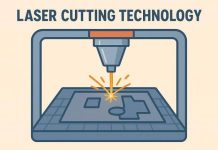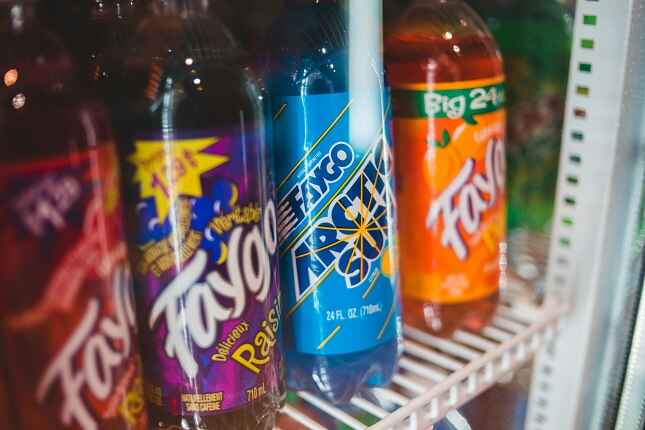Many people buy beverages in bulk to save money or prepare for events, but watching those perfectly fizzy drinks go flat before you can enjoy them is frustrating. So, how can you accumulate carbonated beverage bottles without losing carbonation?
Store carbonated beverages upright in a cool, dark place at a consistent temperature between 35-65°F (2-18°C). Unopened bottles will maintain carbonation for 3-4 months under these conditions.
While this storage method is effective, you should know more about maintaining carbonation in different types of containers and product accumulation systems. Understanding these variables can help you preserve fizz for longer periods and prevent costly waste of your favorite drinks.
Does Container Material Affect Carbonation Loss?
The material of your beverage container plays a crucial role in maintaining carbonation. Plastic bottles (PET) are slightly porous and allow small amounts of carbonation to escape over time, even when sealed. Glass bottles provide better carbonation retention because they’re entirely impermeable, while aluminum cans fall somewhere in between, offering good but not perfect carbonation preservation.
The impact of container material becomes even more pronounced over extended storage periods. Studies have shown that beverages stored in glass bottles can maintain their carbonation up to 47% longer than those stored in plastic containers under identical conditions. This makes glass the preferred choice for long-term storage, though the convenience and durability of plastic often make it a practical choice for everyday use.
How Does Temperature Fluctuation Impact Carbonation?
Temperature changes are among the biggest enemies of carbonation retention. When beverages warm up and cool down repeatedly, it causes the CO2 to separate from the liquid more readily. This is why storing drinks in garages or outdoor spaces often leads to faster carbonation loss, and the damage is already done even if you return the drink to a cold temperature.
The science behind this phenomenon relates to Henry’s Law, which states that the solubility of gas in a liquid is directly proportional to the pressure of the gas above the liquid. As temperature increases, the kinetic energy of the molecules increases, making it harder for the CO2 to remain dissolved in the liquid. This explains why maintaining a consistently cool temperature is crucial for preserving carbonation in your beverages.
What’s The Best Way To Store Partially Used Bottles?
Once a bottle is opened, the carbonation clock starts ticking much faster, but there are ways to extend the fizz. Squeeze excess air out of plastic bottles before replacing the cap, as this reduces the space where CO2 can escape into. Keeping the bottle as full as possible for any container type helps maintain pressure, and storing opened bottles upright and tightly sealed in the refrigerator can help maintain carbonation for 2-3 days.
Understanding the relationship between pressure and carbonation is key to maximizing the lifespan of opened beverages. When you open a bottle, you release the pressurized environment that keeps CO2 dissolved in the liquid. Every time you reopen the bottle, more carbonation escapes. This is why minimizing the number of times you open and close the bottle and proper storage techniques can significantly impact how long your beverage stays carbonated.
Can DIY Carbonation Preservation Methods Be Trusted?
While many popular DIY methods are circulating online for preserving carbonation, most are either ineffective or potentially dangerous. For example, some suggest adding a raisin or a few grains of rice to maintain fizz – these methods are myths and can introduce bacteria into your beverage. Others recommend pressurizing bottles with bike pumps or other devices, which can be unsafe and may cause bottles to explode.
The persistence of these myths often stems from confirmation bias and the placebo effect. People may believe these methods work because they want them to work, or because they happened to drink their beverage before it would have naturally gone flat anyway. Scientific evidence consistently shows that proper storage conditions are the only reliable method for preserving carbonation.
Why Do Some Beverages Seem To Go Flat Faster Than Others?
The rate of carbonation loss varies significantly between different types of carbonated drinks. Like regular sodas, beverages with higher sugar content tend to hold their carbonation longer than sugar-free versions because sugar increases liquid density and helps trap CO2 bubbles. Additionally, drinks with higher initial carbonation levels, such as sparkling water and some craft sodas, may go flat faster simply because they start with more carbonation to lose.
The chemical composition of different beverages also affects their carbonation retention capabilities. The pH level plays a crucial role – more acidic drinks typically retain carbonation better than less acidic ones. This is why citrus-flavored sodas often maintain their fizz longer than other varieties. Certain additives and stabilizers can also impact how well a beverage maintains its carbonation over time.
Time To Get Fizzy With It
Now that you understand the science behind carbonation preservation, start by organizing a dedicated storage space in your home that maintains a consistent cool temperature. Whether it’s a spare refrigerator, a basement shelf, or a kitchen cabinet away from heat sources, creating this optimal storage environment is your first step toward maintaining perfectly carbonated beverages for months.









































